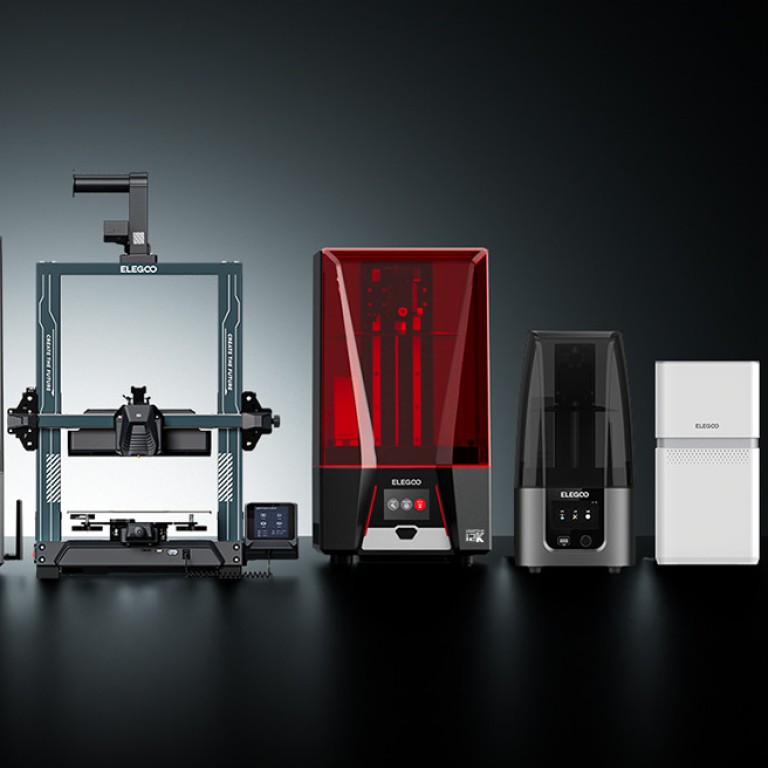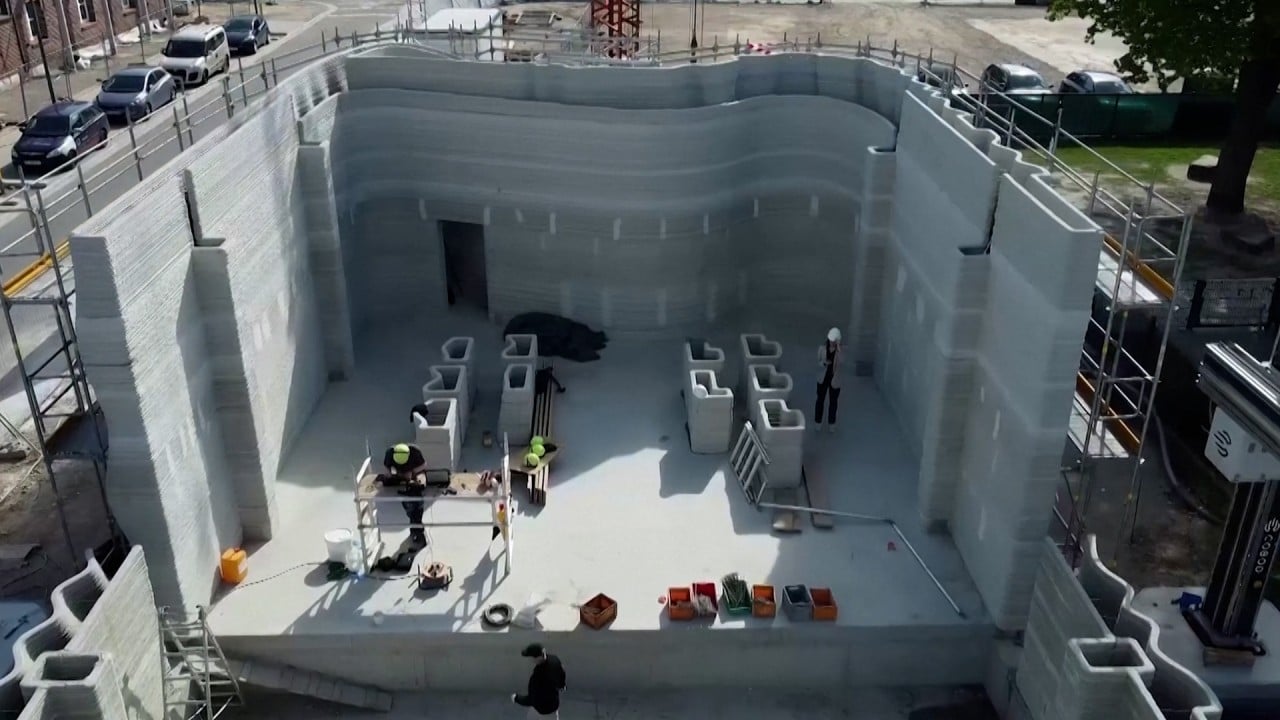
China’s 3D printers are gaining popularity among US consumers, but can they shake their geeky reputation?
- Elegoo, founded in 2015 in Shenzhen, makes consumer-level 3D printers that weigh as little as 9 kilograms for prices as low as US$200 to US$300
- The company says its main clientele consists of gamers, cosplayers and film buffs, but other people can find its technology useful too
Elegoo, founded in 2015, makes consumer-level 3D printers that weigh as little as 9 kilograms for prices as low as US$200 to US$300. They are manufactured out of a 25,000 square metre factory in Shenzhen, China’s southern tech hub.
“Our goal is to lower entry barriers, bringing the fascinating technology of 3D printing to the general public’s garages, basements and table tops,” co-founder and chief marketing officer Kevin Wang told the South China Morning Post in a recent interview.
Wang said 3D printers were previously confined to university STEM departments and industrial facilities, but strides in the technology could make it as relevant a household item as a traditional 2D printer.
The company said it has sold over 1 million units since 2018 and has grown to over 500 employees, shipping to over 70 countries and regions through online marketplaces, including those run by Shopify, Amazon.com and Alibaba Group Holding, which owns the Post. Over half of the sales come from the US.
Although Elegoo’s compact machines can generally only print items no larger than a shoebox, individual parts can be printed and then assembled into larger items, offering endless use cases, the company said.
“Any idea you have, any item you want customised or cannot buy from the open market, 3D printing solutions can make it possible,” said Wang.
While customers with 3D modelling and design experience may have an easier time tailoring their creations, prior knowledge is not a prerequisite due to a growing market of tutorials and ready-to-print designs offered online, he added.

Despite Elegoo’s ambitions, its products have yet to break out of niche and hobbyist-centred markets.
“Right now, the main clientele consists of gamers, cosplayers and movie lovers,” Wang said, gesturing to a 3D figurine of the Hulk – the giant green superhero in Marvel Studios films – on his desk.
The global action figure and tabletop game markets are projected to reach US$15.3 billion and US$4.1 billion, respectively, by 2031, while the global cosplay costume market is expected to hit US$23 billion by 2030, according to Allied Market Research.
Still, Elegoo hopes that a more diverse customer base will open up to 3D printing as products become more accessible and publicised.
The latest marketing campaigns from the company pitch the printers to everyday users who may use it to create customised gadgets and home decor items. Meanwhile, 3D printer tech provides new business value propositions to small and medium-sized enterprises, entrepreneurs and creators, according to Wang.
“For example, filmmakers from Hollywood are using 3D printing technology to make props for their movies, while aerospace and car engineers use them to 3D-print prototype parts and components for their partners,” he said.

Amazon reviews show Elegoo’s machines have also been used by customers to make or test jewellery and prototype equipment such as scuba diving parts, and replace missing or broken pieces in various everyday items.
While the machines come with free and open-source software used to design 3D images, customers need to buy printing materials: either solid plastic filament or liquid resin, depending on the model.
A large and intricate item may use about 1kg of resin, which costs anywhere from US$10 to US$50 on Amazon. More experienced users may also want to invest in separate, paid design software.
Even so, the 3D printing process has become cheap and easy enough that it has created new business models such as 3D printing farms – companies that buy many 3D printers to create and sell various products or product pieces – Wang said.
The company has a growing list of competitors globally, but Chinese manufacturers generally offer the lowest prices for high-rated products. Rival Shenzhen-based 3D printer sellers Anycubic and Creality both offer consumer-level printers for under US$300.

Elegoo said it tries to say ahead of the competition by investing heavily in research and development. The company made a major tech breakthrough in 2019 when it released its first light-curing printer able to create 2K precision designs.
While most 3D printers models use a nozzle that dispenses melted filament to trace out an object, light-curing printers use an ultraviolet light located at the base of the printer to harden specific spots in a pool of resin – layer by layer – allowing for the fabrication of smaller, more intricate designs.
Elegoo also recently released laser engraver products in efforts to diversify their “smart manufacturing” offerings and reach new markets. The company said its gross revenue last year exceeded US$118 million.
The company has plans to begin shipments to Brazil this year, with future plans to expand to India, the United Arab Emirates and Saudi Arabia.


